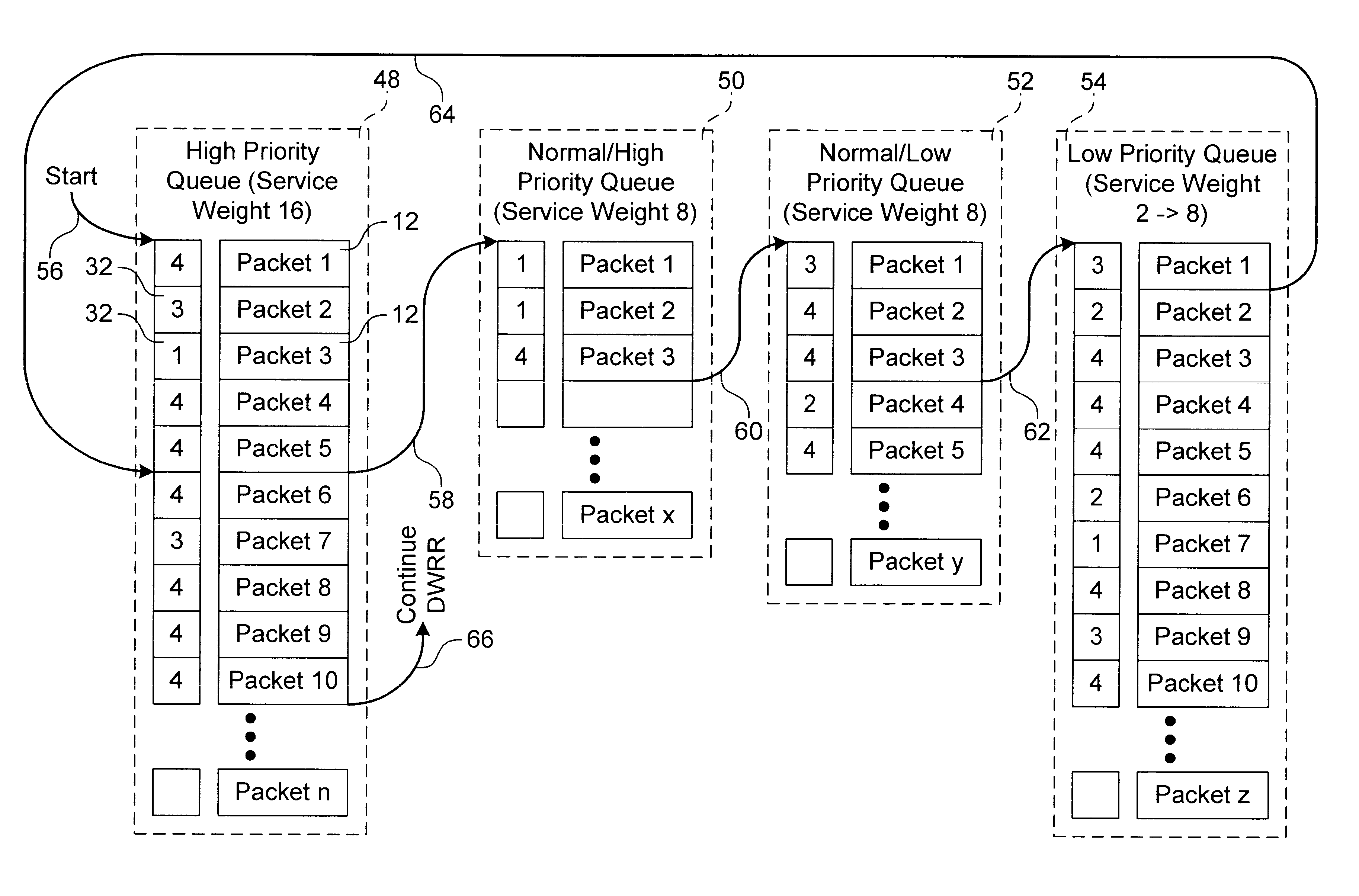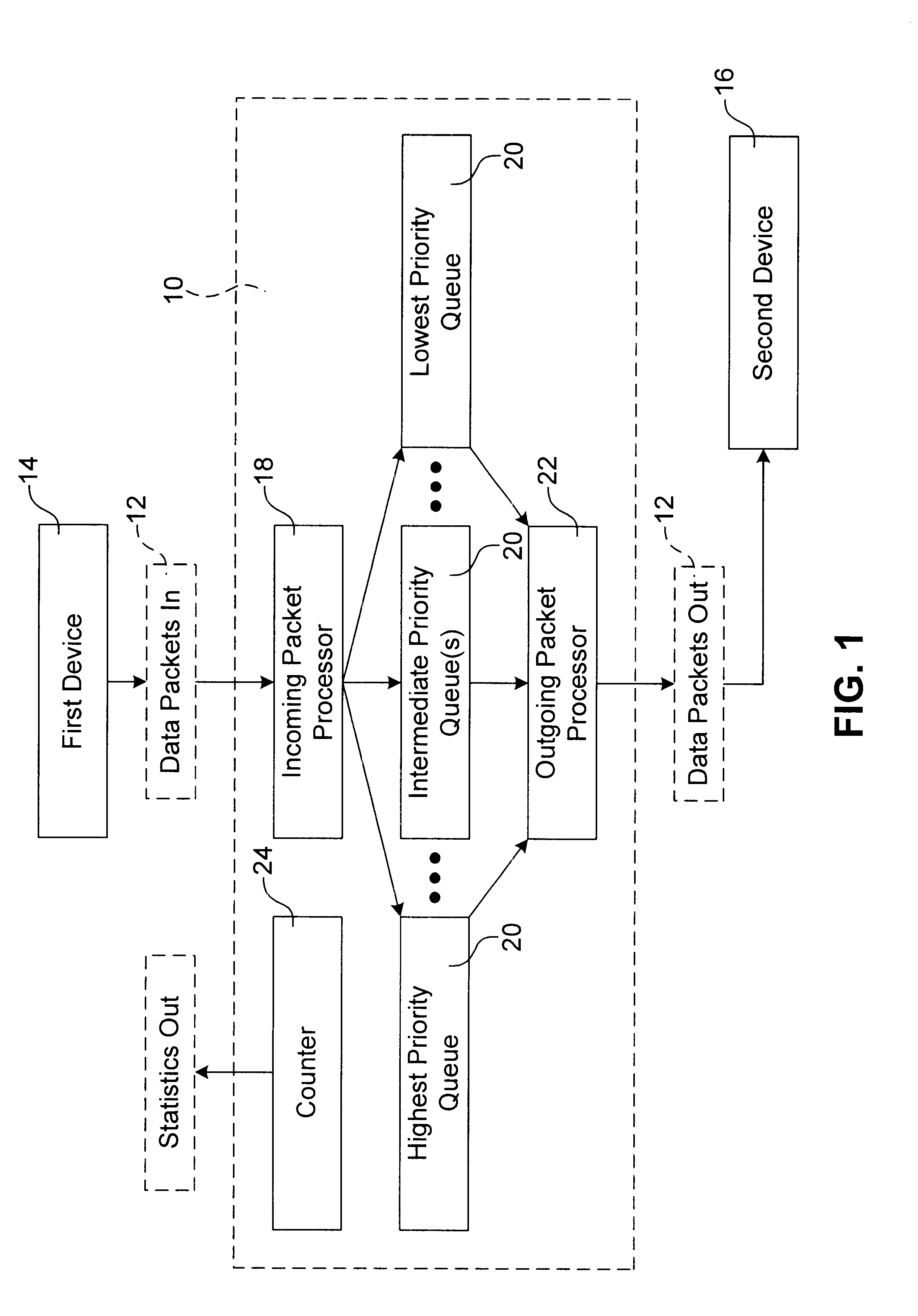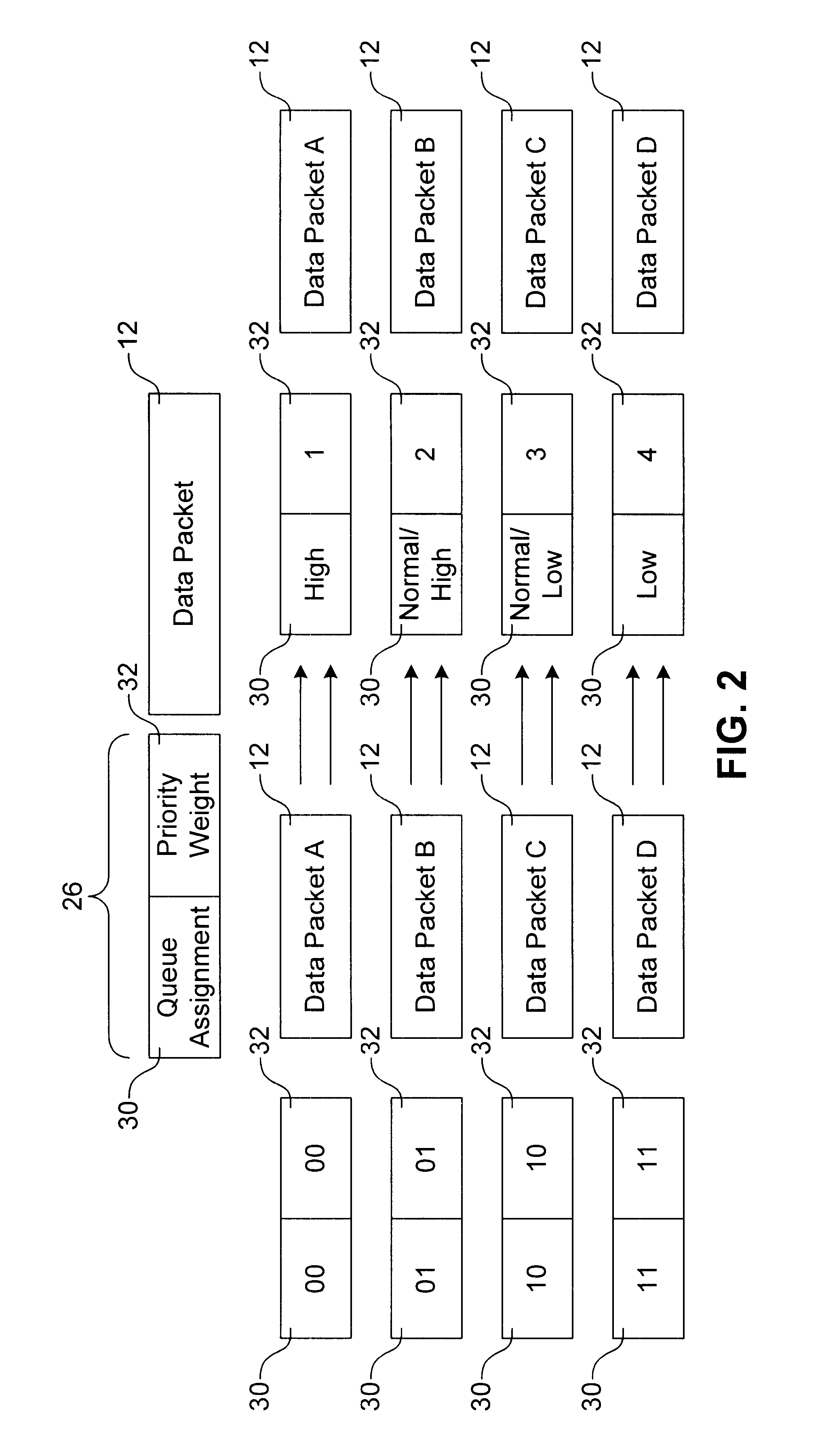Dynamic weighted round robin queuing
a round robin, dynamic technology, applied in the direction of data switching networks, electrical equipment, digital transmission, etc., can solve the problems of low priority data packets that may experience significant delay before being delivered, high priority queue and low priority data packets that are not serviced enough, so as to enhance the performance of the queuing switch
- Summary
- Abstract
- Description
- Claims
- Application Information
AI Technical Summary
Benefits of technology
Problems solved by technology
Method used
Image
Examples
Embodiment Construction
In order to further describe the dynamic weighted round robin method of the present invention, the following example is provided. Referring now to FIG. 5, an example queuing switch 10 is provided with four priority queues 20, including a high priority queue 48, a normal / high priority queue 50, a normal / low priority queue 52 and a low priority queue 54. The high priority queue 48 is assigned a service weight of 16 and can store up to n number of packets, the normal / high priority queue 50 is assigned a service weight of 8 and can store up to x number of packets, the normal / low priority queue 52 is assigned a service weight of 8 and can store up to y number of packets and the low priority queue 54 is assigned a service weight of two and can store up to z number of packets. In this example, each data packet 12 can have a priority weight of 1, 2, 3 or 4. For illustrative purposes, FIG. 5 shows each priority queue populated with a series of data packets 12. The high priority queue 48 cont...
PUM
 Login to View More
Login to View More Abstract
Description
Claims
Application Information
 Login to View More
Login to View More - R&D
- Intellectual Property
- Life Sciences
- Materials
- Tech Scout
- Unparalleled Data Quality
- Higher Quality Content
- 60% Fewer Hallucinations
Browse by: Latest US Patents, China's latest patents, Technical Efficacy Thesaurus, Application Domain, Technology Topic, Popular Technical Reports.
© 2025 PatSnap. All rights reserved.Legal|Privacy policy|Modern Slavery Act Transparency Statement|Sitemap|About US| Contact US: help@patsnap.com



